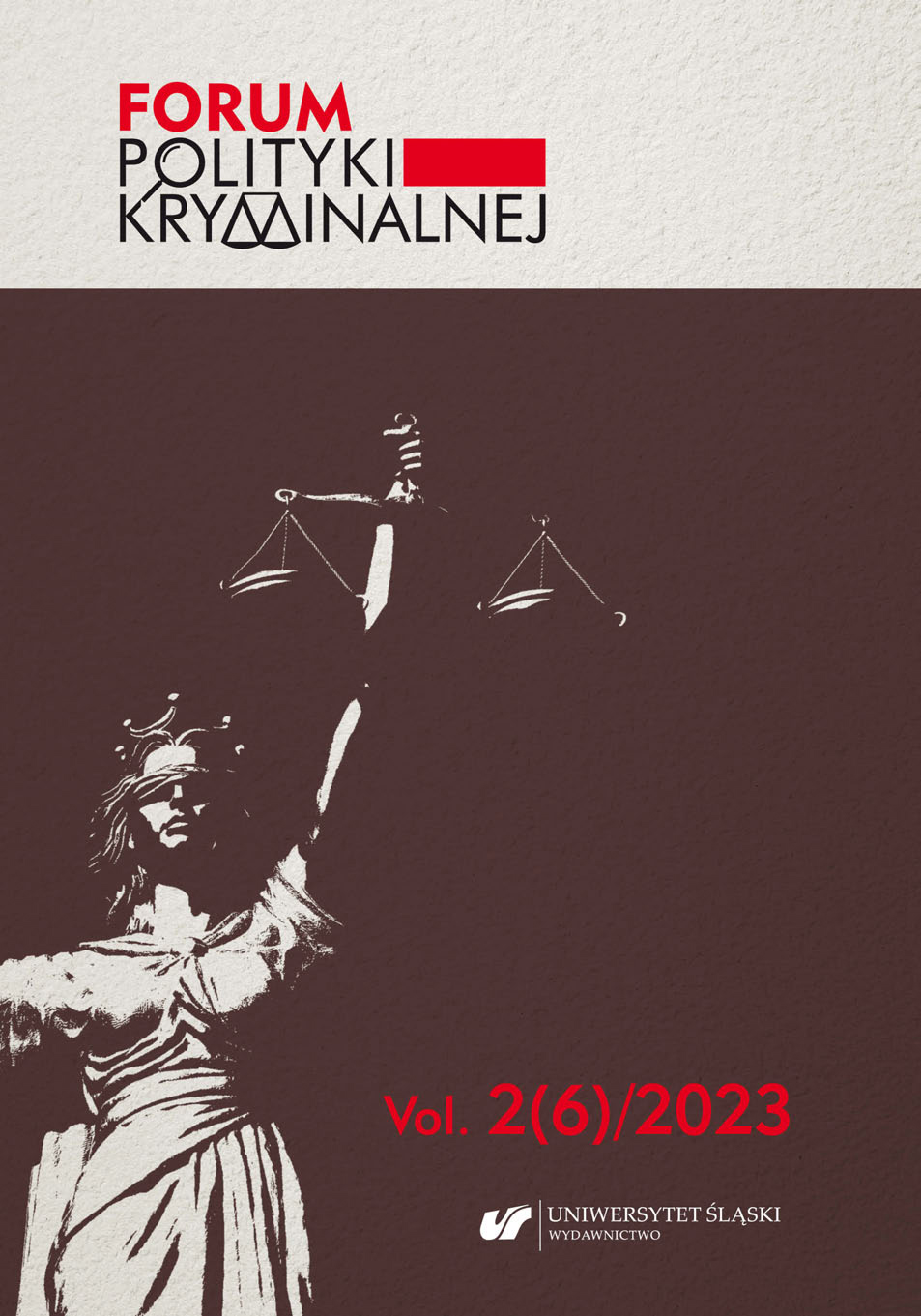Jednostki — postawy — struktura społeczna (na przykładzie wybranych bohaterów dystopijnych powieści Margaret Atwood)
DOI:
https://doi.org/10.31261/GSS_SN.2022.13.05Ключевые слова:
dystopia, świat społeczny, socjologia literatury, Margaret AtwoodАннотация
Niniejsze studium to socjologiczna analiza dystopii literackich kanadyjskiej powieściopisarki Margaret Atwood: trylogii MaddAddam, Opowieści podręcznej a także jej kontynuacji, opublikowanych w 2020 roku Testamentów. Za kluczowe przyjmuje się tu te zagadnienia i konteksty, które w sposób wyraźny i jednoznaczny budują obraz świata społecznego zarysowanego w powieściach kanadyjskiej pisarki, odczytywane będą przez pryzmat socjologii literatury. Zaś podstawowym pytanie brzmi – jak przedstawia się struktura świata społecznego w omawianych powieściach? Odpowiedzi na nie autorka będzie poszukiwała odwołując się, między innymi do koncepcji Roberta K. Mertona odnoszącej się do typów indywidualnego przystosowania się jednostek do zmieniających się warunków struktury społecznej.
Библиографические ссылки
Aronson E., Wilson D.T., Akert R.M., 1997: Psychologia społeczna. Serce i umysł. Przeł. A. Bezwińska et al. Poznań: Zysk i S-ka.
Atwood M., 2003: Oryks i Derkacz. Przeł. M. Hesko-Kołodzińska. Poznań: Zysk i S-ka.
Atwood M., 2010: Rok potopu. Przeł. M. Michalski. Kraków: Znak.
Atwood M., 2017a: MaddAddam. Przeł. T. Wilusz. Warszawa: Prószyński i Media.
Atwood M., 2017b [1986]: Opowieść podręcznej. Przeł. Z. Uhrynowska-Hanasz. Warszawa: Wielka Litera.
Atwood M., 2020: Testamenty. Przeł. P. Lipszyc. Warszawa: Wielka Litera.
Booker M.K., 1994: Dystopian Literature: A Theory and Research Guide. London: Greenwood.
Bourdieu P., 2001: Zaproszenie do socjologii refleksyjnej. Przeł. A. Sawisz. Warszawa: Oficyna Naukowa.
Bradbury R., 1993: 451° Fahrenheita. Przeł. A. Kaska. Warszawa: Wydawnictwo Alkazar.
Dahrendorf R., 1970: Essays in the Theory of Society. London: Routledge & Kegan Paul.
Deutsch M., Gerard H.B., 1955: A Study of Normative and Informational Social Influence upon Individual Judgement. „Journal of Abnormal and Social Psychology”, Vol. 51(3), s. 629—636.
Durkheim E., 1999: O podziale pracy społecznej. Przeł. K. Wakar. Warszawa: Wydawnictwo Naukowe PWN.
Festinger L., Thibaut J., 1951: Interpersonal Communication in Small Group. „Journal of Abnormal and Social Psychology”, Vol. 46(1), s. 92—99.
Juszczyk A., 2014: Stary, wspaniały świat. O utopiach pozytywnych i negatywnych. Kraków: Wydawnictwo Uniwersytetu Jagiellońskiego.
Kelly H., 1955: The two Functions of Reference Groups. In: Readings in Social Psychology (3rd ed.). Eds. G.E. Swanson, T.M. Newcomb, E.L. Hartley. New York: Holt, s. 410—444.
Lewin K., 1943: Defining the ‘field at a given time’. „Psychological Review”, Vol. 50(3), s. 292—310.
Łęcki K., 1999: Literatura piękna. W: Encyklopedia socjologii. T. 2: K—N. Red. W. Kwaśniewicz et al. Warszawa: Oficyna Naukowa, s. 128—134.
Łęcki K., 2000: Socjologia literatury. W: Literatura polska XX wieku. Przewodnik encyklopedyczny. T. 2: P—Z. Red. A. Hutnikiewicz, A. Lam. Warszawa: Wydawnictwo Naukowe PWN, s. 135—155.
Merton R.K., 1982: Teoria socjologiczna i struktura społeczna. Przeł. E. Morawska, J. Wertenstein-Żuławski. Warszawa: Wydawnictwo Naukowe PWN.
Niewiadomski A., Smuszkiewicz A., 1990: Leksykon polskiej literatury fantastyczno-naukowej. Poznań: Wydawnictwo Poznańskie.
Simmel G., 1975: Socjologia. Przeł. M. Łukasiewicz. Warszawa: Wydawnictwo Naukowe PWN.
Waśkiewicz A., 2008: Obcy z wyboru. Studium filozofii aspołecznej. Warszawa: Prószyński i S-ka.
Wężyk K., 2019: Rób, co możesz, tak dobrze, jak potrafisz, tak długo, jak możesz. „Książki. Magazyn do czytania”, nr 5(38), s. 43—45.
Загрузки
Опубликован
Как цитировать
Выпуск
Раздел
Лицензия
Właściciele praw autorskich do nadesłanych tekstów udzielają Czytelnikowi prawa do korzystania z dokumentów pdf zgodnie z postanowieniami licencji Creative Commons 4.0 International License: Attribution-Share-Alike (CC BY-SA 4.0). Użytkownik może kopiować i redystrybuować materiał w dowolnym medium lub formacie oraz remiksować, przekształcać i wykorzystywać materiał w dowolnym celu.
1. Licencja
Wydawnictwo Uniwersytetu Śląskiego zapewnia natychmiastowy otwarty dostęp do treści swoich czasopism na licencji Creative Commons BY-SA 4.0 (http://creativecommons.org/licenses/by-sa/4.0/). Autorzy publikujący w tym czasopiśmie zachowują wszelkie prawa autorskie i zgadzają się na warunki wyżej wymienionej licencji CC BY-SA 4.0.
2. Oświadczenie Autora
Autor deklaruje, że artykuł jest oryginalny, napisany przez niego (i współautorów), nie był wcześniej publikowany, nie zawiera stwierdzeń niezgodnych z prawem, nie narusza praw innych osób, jest przedmiotem praw autorskich, które przysługują wyłącznie autorowi i jest wolny od wszelkich praw osób trzecich, a także, że autor uzyskał wszelkie niezbędne pisemne zgody na cytowanie z innych źródeł.
Jeśli artykuł zawiera materiał ilustracyjny (rysunki, zdjęcia, wykresy, mapy itp.), Autor oświadcza, że wskazane dzieła są jego dziełami autorskimi, nie naruszają niczyich praw (w tym osobistych, m.in. prawa do dysponowania wizerunkiem) i posiada do nich pełnię praw majątkowych. Powyższe dzieła udostępnia jako część artykułu na licencji „Creative Commons Uznanie autorstwa-Na tych samych warunkach 4.0 Międzynarodowe”.
UWAGA! Bez określenia sytuacji prawnej materiału ilustracyjnego oraz załączenia stosownych zgód właścicieli majątkowych praw autorskich publikacja nie zostanie przyjęta do opracowania redakcyjnego. Autor/autorka oświadcza równocześnie, że bierze na siebie wszelką odpowiedzialność w przypadku podania nieprawidłowych danych (także w zakresie pokrycia kosztów poniesionych przez Wydawnictwo UŚ oraz roszczeń finansowych stron trzecich).
3. Prawa użytkownika
Zgodnie z licencją CC BY-SA 4.0 użytkownicy mogą udostępniać (kopiować, rozpowszechniać i przekazywać) oraz adaptować (remiksować, przekształcać i tworzyć na podstawie materiału) artykuł w dowolnym celu, pod warunkiem, że oznaczą go w sposób określony przez autora lub licencjodawcę.
4. Współautorstwo
Jeśli artykuł został przygotowany wspólnie z innymi autorami, osoba zgłaszająca niniejszy formularz zapewnia, że została upoważniona przez wszystkich współautorów do podpisania niniejszej umowy w ich imieniu i zobowiązuje się poinformować swoich współautorów o warunkach tej umowy.
Oświadczam, że w przypadku nieuzgodnionego z redakcją i/lub wydawcą czasopisma wycofania przeze mnie tekstu z procesu wydawniczego lub skierowania go równolegle do innego wydawcy zgadzam się pokryć wszelkie koszty poniesione przez Uniwersytet Śląski w związku z procedowaniem mojego zgłoszenia (w tym m.in. koszty recenzji wydawniczych).


